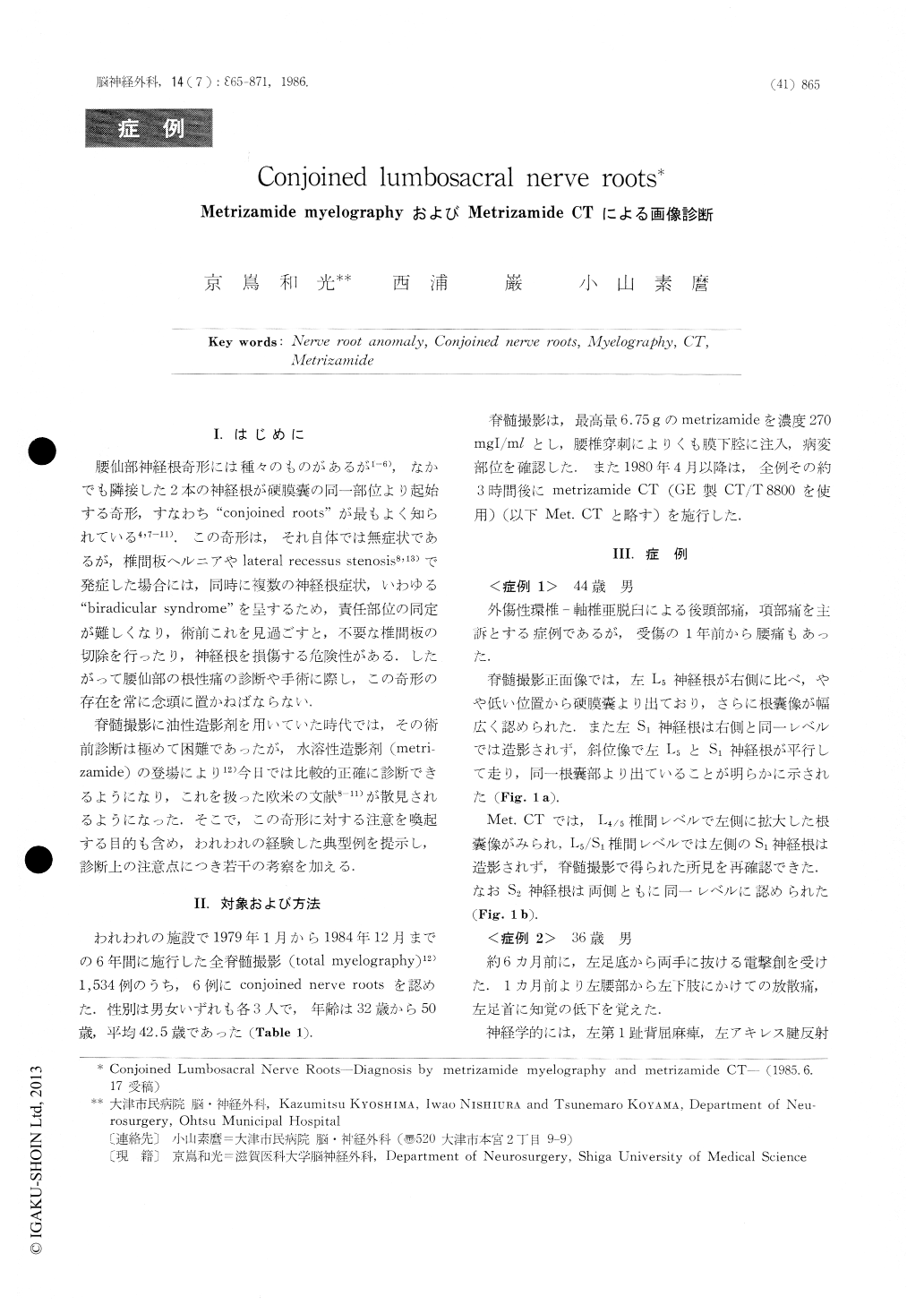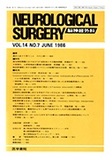Japanese
English
- 有料閲覧
- Abstract 文献概要
- 1ページ目 Look Inside
I.はじめに
腰仙部神経根奇形には種々のものがあるが1-6),なかでも隣接した2本の神経根が硬膜嚢の同一部位より起始する奇形,すなわち"conjoined roots"が最もよく知られている4,7-11).この奇形は,それ自体では無症状であるが,椎間板ヘルニアやlateral recessus stenosis8,13)で発症した場合には,同時に複数の神経根症状,いわゆる"biradicular syndrome"を呈するため,責任部位の同定が難しくなり,術前これを見過ごすと,不要な椎間板の切除を行ったり,神経根を損傷する危険性がある.したがって腰仙部の根性痛の診断や手術に際し,この奇形の存在を常に念頭に置かねばならない.
脊髄撮影に油性造影剤を用いていた時代では,その術前診断は極めて困難であったが,水溶性造影剤(metri—zamide)の登場により12)今日では比較的正確に診断できるようになり,これを扱った欧米の文献8-11)が散見されるようになった.そこで,この奇形に対する注意を喚起する目的も含め,われわれの経験した典型例を提示し,診断上の注意点につき若干の考察を加える.
Several kinds of the lumbosacral nerve root anomalies have already been recognized, and the conjoined nerve roots is the most common among them. It does not make symptoms by itself, hut if there is a causation of neural entrapment, for example, disc herniation, lateral recessus stenosis, spondy-lolisthesis, etc., so called "biradicular syndrome" should occur.
Anomalies of the lumbosacral nerve roots, if not properly recognized, may lead to injury of these nerves during operation of the lumbar spine.

Copyright © 1986, Igaku-Shoin Ltd. All rights reserved.


